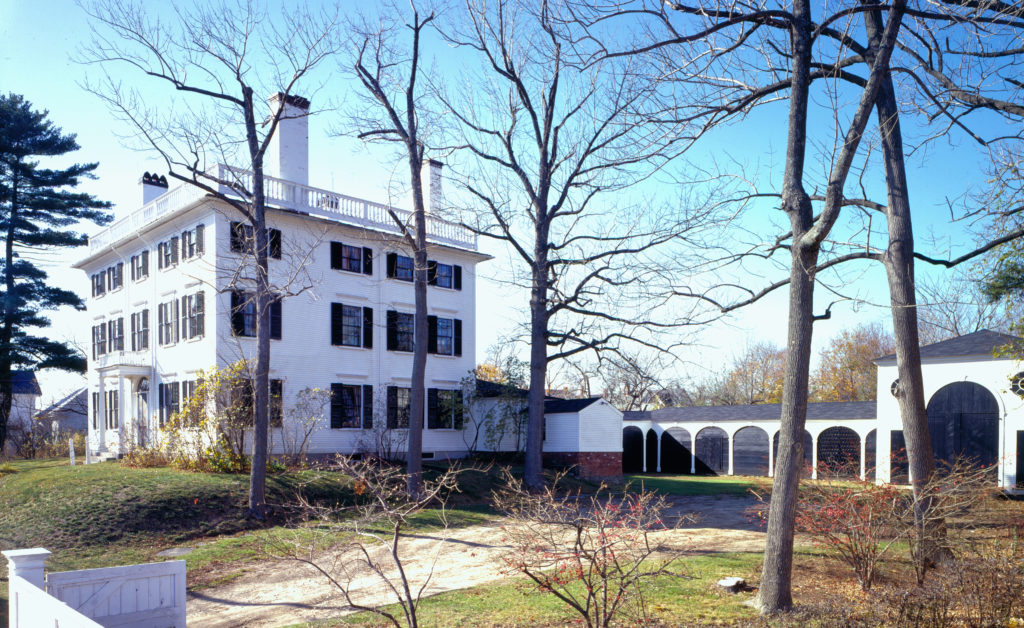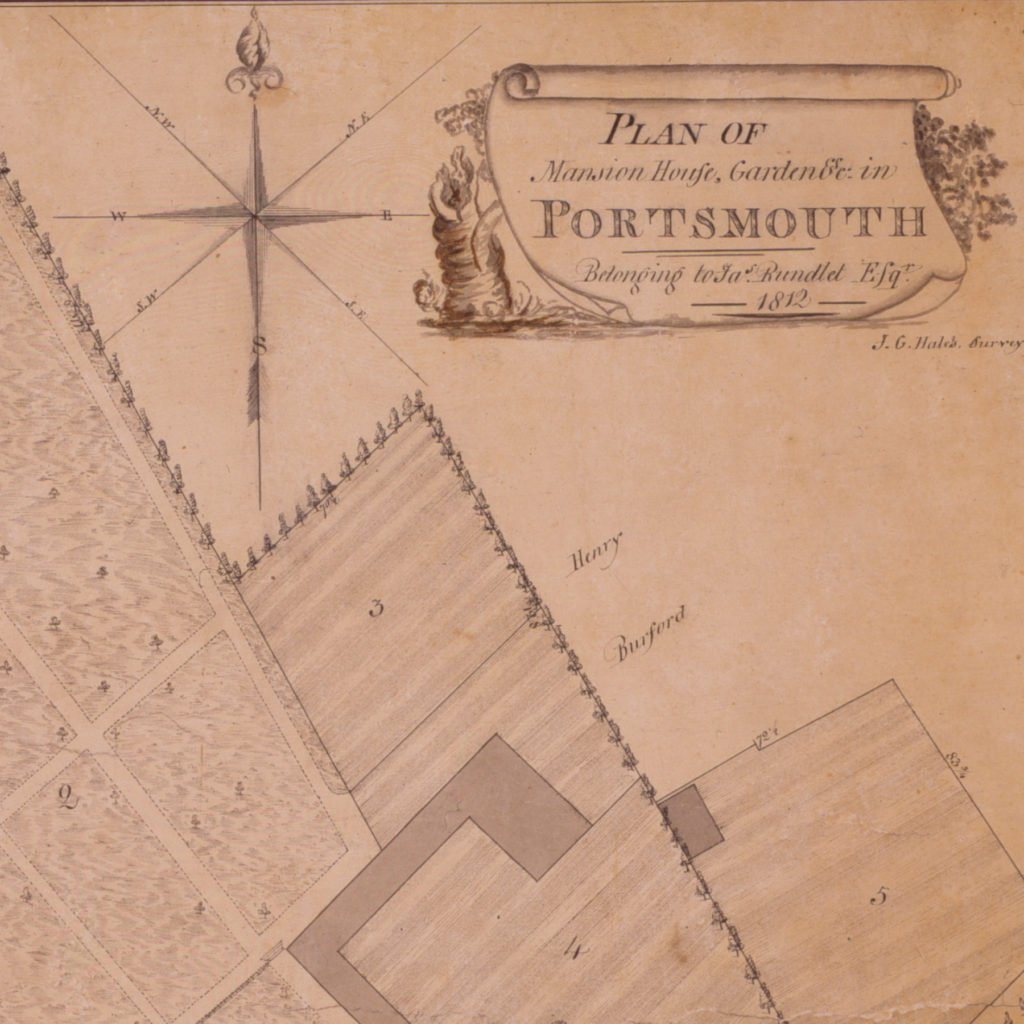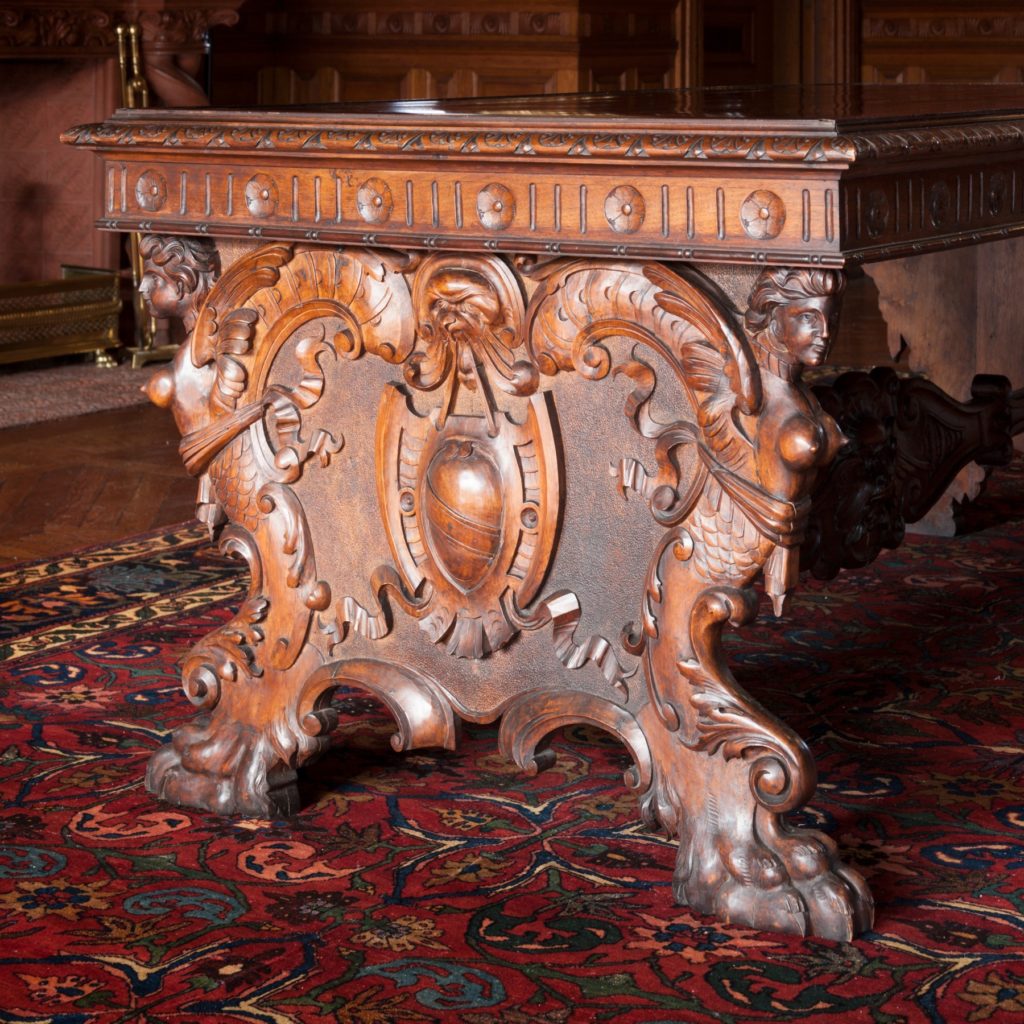 Rundlet-May House
Rundlet-May House
House and Landscape Plan
James Hales Plan, 1812
This plan rendered by J. G. Hales in 1812 depicts the Rundlets’ house as a typical Neoclassical building of its time, with an L-shaped wing extending out the back of the house. Orchards comprised some of the garden plan, which is a regimented partitioning of room-like settings with pathways. The pathways are still maintained today, so even though this plan is somewhat idealised and pared down in the rendering, it demonstrates that the layout of the grounds and pathways have not changed much since the plan originated in 1812. On the plan is also depicted a fence that runs between the house and drive, and drive and fence in the service yard. Lombardy poplars may have been planted in front of the house, with lilacs framing the rear of the property. The plan also depicts the house before the Summer Kitchen (Scullery) was added on.
Building the House
An 1807 Showplace in Portsmouth
Building a house in Portsmouth in the first years of the nineteenth century was an undertaking that often involved an emerging class of craftmen, artisans, and workers who contructed many parts of the city that can still be seen today. As Portsmouth had faced much expansion during the shipbuilding era with a population rivaling port cities of Boston and Salem to the south, new houses were built by ship owners and those active in the trade eager to partake in the strong economy and opportunity at hand. By about 1800, the emerging elite that benefited from trade and privateer pursuits overall were interested in forging a path to a more open countryside to build their homes; Portsmouth’s Middle Street was just far enough from the bustling harbor and business area to feel removed. It also allowed the Rundlets an expansive bountiful space to build a property of unparalleled luxury that came with great technological innovations.
Making a Template Visible
Template and the Template ProjectTemplate videos can include content as well. Lorem ipsum dolor sit amet, consectetur adipiscing elit. Ut eget pretium sapien, et laoreet est. Donec in velit sit amet purus tristique ultricies a sit amet turpis. Aenean mollis lorem eget magna imperdiet ultricies.
Historic Paint Cross Section
Template Uncovering the Original Paint
In order to discover the original paint of the hall, a deep chip was removed from the wall and its cross section examined through a microscope, revealing each layer of paint. In this cross section from the hall, four individual layers of red paint were used to create the original wall treatment, followed by a single layer of modern white paint. The four original paint layers contained hand-ground pigments of various sizes, creating a depth in the color that was more like canvas painting than modern wall painting. As part of the restoration of the Eustis mansion, Historic New England hired specialized decorative painters to recreate the four layers of red in the hallway, restoring it to the original Pompeiian red.
Base layer of red paint.
Second layer of red paint.
Third layer of red paint.
Top layer of red varnish.
Modern white latex paint, now painted over.
to learn more
Test Hales Plan
This is the Hales Plan
Template Hall Table
This long rectangular table has served as a centerpiece in the entrance hall since the house was built. Its impressive carving is in the style of the Italian Renaissance, a popular source for design in the late nineteenth century. One of the most notable practitioners in this style was the Italian carver Luigi Frullini (1839-1897) who worked for many wealthy Americans, most notably completing the decoration of two rooms at Chateau-sur-Mer in Newport. The Eustises believe that Frullini carved the panels flanking the sideboard in the dining room.


